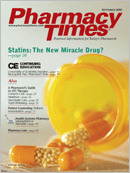Publication
Article
Pharmacy Times
The Ignorance of Certainty - "Facts" Sometimes Aren't
Virtually all of the great scientists over the past century have recognized that absolute certainty is simply unattainable in science. One can arrive very close to the goal of absolute certainty?for example, with the germ theory of infectious disease?but there is a fundamental sense in which all theories are in principle replaceable by something that more closely approximates the truth. In other words, all scientific truths are provisional, notwithstanding that some of them are astonishingly close to reality.
By historical standards, the scientific field of drug-drug interactions is relatively new. Exactly 40 years ago the first major symposium on drug interactions was held in Britain. As with any emerging discipline, knowledge of drug interactions has advanced by fits and starts. The relatively recent discoveries of cytochrome P-450 isozymes and ATP [adenosine triphosphate]-binding cassette transporters such as P-glycoprotein have revolutionized the field, but they also have introduced some confusion and misunderstandings.
Ignorance from Lack of Data
Ignorance can arise, of course, when the needed knowledge just is not available. Indeed, some drug interaction disagreements have resulted from simple lack of information?the discoveries vital to the correct answer were still in the future. A good example is the debate in the 1970s regarding the digoxin- quinidine interaction. There was much discussion about what could possibly be causing the increased digoxin serum concentrations. Because the role of Pglycoprotein in digoxin elimination was not known at the time, however, it was not possible to determine the true nature of the interaction (inhibition of P-glycoprotein by quinidine).1
The cure for this kind of ignorance is to always keep in mind the provisional nature of scientific truth, and to allow this awareness to instill a degree of scientific humility into one's thinking. One does not need to refrain from critically evaluating other people's statements about drug interactions. Doing so is a valuable?indeed necessary?part of the scientific process. Yet, critiquing others is quite different from asserting that one is in sole possession of the truth.
Ignorance from Not Recognizing Existing Data
In other cases, ignorance stems simply from lack of awareness. If one reads the drug interaction literature for a few months, one will see that the myth of plasma protein-binding displacement as an important mechanism for drug-drug interactions is still alive and well. Similarly, the belief that ranitidine was an inhibitor of cytochrome P-450 isozymes remained long after there was conclusive evidence to the contrary.2 Also, to this day, many refuse to believe that giving a systemic dose of epinephrine to a patient on a nonselective beta-blocker can produce disastrous increases in systolic blood pressure. For some reason, it appears counterintuitive to many practitioners, and they reject it out of hand.3
The cure for this kind of ignorance is to improve the evaluation and dissemination of drug-drug interaction information to health care professionals. Given the enormous amount of available information on drug-drug interactions, this goal will never be fully reached, but one must continue to try to reach it.
The Importance of Admitting Ignorance
Those who are aware of their ignorance, and have a good idea of where their primary pockets of ignorance reside, are less dangerous than those who have the illusion of knowledge. In his play The Life of Galileo, Bertolt Brecht observed that the chief cause of poverty in science is imaginary wealth. Indeed, those who do not know, and do not know that they do not know, pose the greatest hazard to their patients.
Reducing one's level of ignorance of drug interactions through study also is valuable. Learning as much as possible about drug-drug interactions not only provides positive information useful in the care of patients, but also provides greater insight into one's areas of ignorance. The more one knows about drug interactions, the better one will be able to identify when one needs to seek additional information in order to reduce the risk of an adverse drug interaction.
Summary
?Recognize that scientific certainty is not attainable for drug interactions or any other scientific discipline
?Maintain a healthy skepticism when considering statements of fact about drug interactions?more than one viewpoint exists for many drug interactions
?Accept that one must almost always make decisions about drug interactions that are based on less than completely adequate information.
?Exercise restraint in making dogmatic statements about the clinical importance of particular drug-drug interactions, particularly in relation to predicting the clinical outcome in individual patients.
Drs. Horn and Hansten are both professors of pharmacy at the University of Washington School of Pharmacy. For an electronic version of this article, including references if any, visit www.hanstenandhorn.com.
For a list of references, send a stamped, self-addressed envelope to: References Department, Attn. A. Stahl, Pharmacy Times, 241 Forsgate Drive, Jamesburg, NJ 08831; or send an e-mail request to: [email protected].

Newsletter
Stay informed on drug updates, treatment guidelines, and pharmacy practice trends—subscribe to Pharmacy Times for weekly clinical insights.






